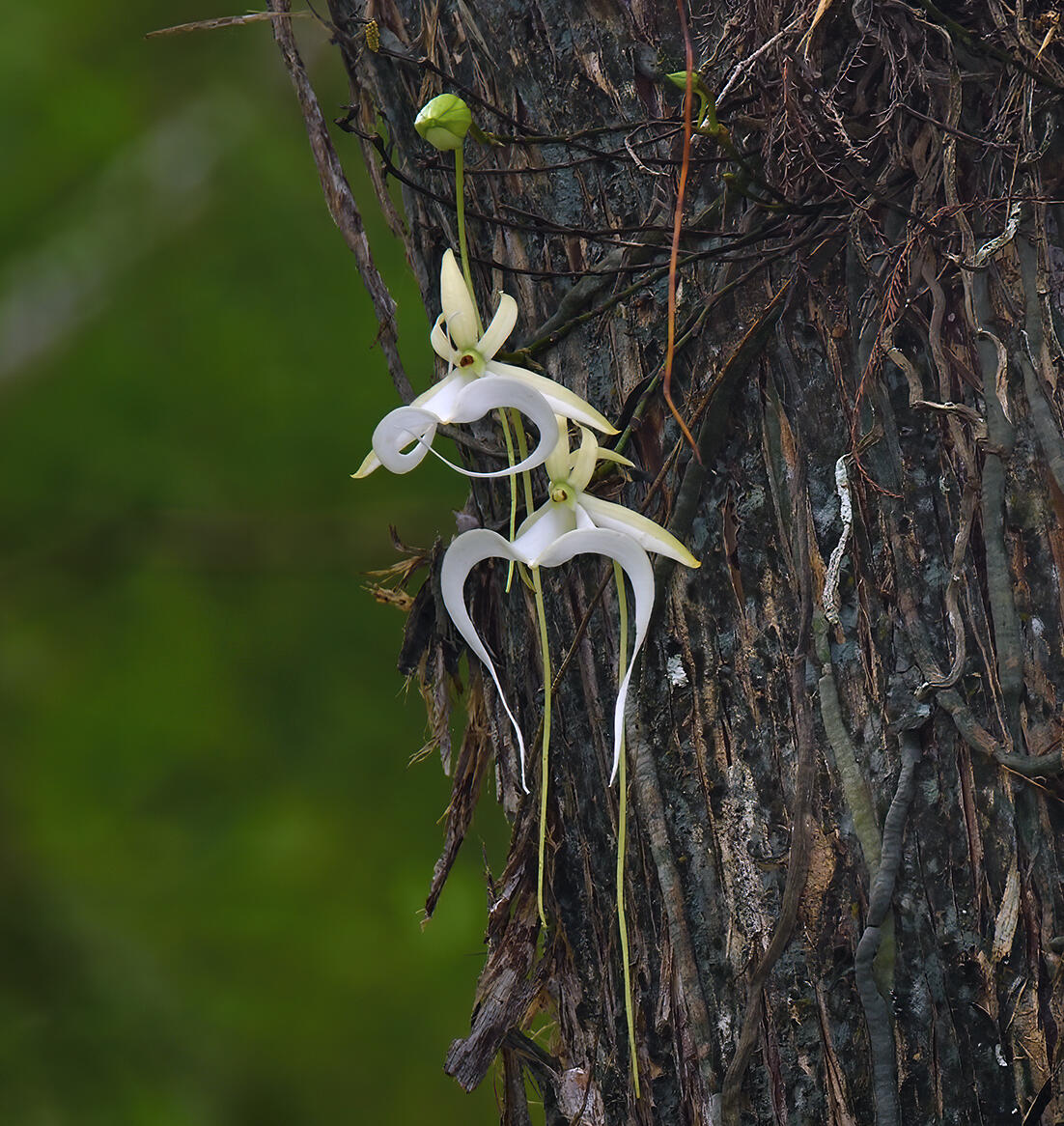The “Super” ghost orchid at Audubon’s Corkscrew Swamp Sanctuary is now blooming. Ghost orchids (Dendrophylax lindenii) are rare flowering plants that rely on extremely sensitive, wetland habitats, and are only known to live in South Florida and Cuba.
"The bald cypress forest at the Sanctuary provides the perfect conditions for the ghost orchid bloom,” said Sanctuary Director Lisa Korte, PhD. “We are thankful to the Naples community that came together to save Corkscrew Swamp from logging in 1954. Today these elegant blooms remind us that Corkscrew Swamp is a special place,” she added.
The “Super” ghost orchid, one of several on record at the Sanctuary, was discovered in July 2007. It typically returns to the spotlight each summer, although it has had blooms at other times of the year. As the largest ghost orchid ever discovered, its blossoms draw international attention.
Ghost orchids are “epiphytes:” plants that cling to the surface of certain species of trees’ trunks and limbs. They receive all of their food and water through the atmosphere or from the surface of their host tree, while they do no harm to their host. Ghost orchids have no actual leaves and throughout much of the year, the plants are barely visible. Once the blossoms drop off, only their roots remain. As soon as summer rains and humidity return to the forest, ghost orchids spring to life, producing multiple spikes, buds, and blossoms. The majority of the blooms occur between June and October.
The “Super” ghost orchid at Corkscrew Swamp Sanctuary is located about 70 feet off the ground on a bald cypress tree roughly 100 feet off the boardwalk. In order to see the blooms, orchid enthusiasts are encouraged to bring a spotting scope or binoculars, and a recommended lens length of 600 mm to get a decent photo.
The specific climate and ecology of Corkscrew Swamp Sanctuary make the growth of this rare orchid possible. Ghost orchids only grow in sub-tropical wetlands and are most common in remote swamps, where they are only easily found when blooming. Threats to the orchids include poaching, loss and/or degradation of habitat, and climate change.
Over the past several decades, human activities have significantly reduced the quantity and quality of wetland habitats across Florida. The future of ghost orchids depends on vigilant habitat protection and orchid-lovers respecting and admiring this captivating species from a distance.
Audubon’s Corkscrew Swamp Sanctuary is recognized as one of the world’s most valuable wetland ecosystems and has been protected by Audubon for more than 100 years. The Sanctuary spans more than 13,000 acres, including the largest remaining, old-growth bald cypress forest. An estimated 100,000 visitors annually explore the Sanctuary’s 2.25 miles of boardwalk through ancient forest, marsh, and upland habitats.
Visit
The "Super" Ghost Orchid is Blooming!
The orchid's first bloom of the 2021 season was observed on July 2.





